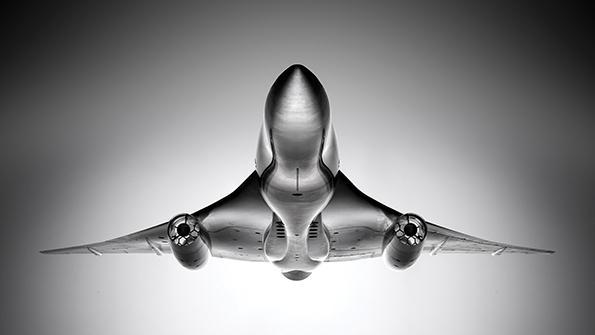Questions Growing Over The Future Of The Supersonic Business Jet Market

This is an abbreviated version of the AWST article - Civil Supersonics Delayed After Aerion Pulls Plug
Since Concorde’s demise in 2003, industry consensus has been that business aviation and its demand for higher speed will lead a civil supersonic transport revival.
Aerion Supersonic, a pioneering company backed by U.S. billionaire Robert Bass, has been in the forefront of this resurgence for the past 18 years. Propelled by the unshakable belief that speed sells, the company’s supersonic aircraft concept has evolved through several design cycles into the arrow-wing Mach 1.4 AS2 business jet.
As the design was finalized over the past two years, so was the industrial team to bring it to reality. With aerospace heavyweights Boeing, GE Aviation and Spirit AeroSystems among the AS2 group members in 2019, the project looked to be gathering momentum. By early 2021, having attracted commitments for more than 90 aircraft valued at over $11 billion, Aerion was on the brink of full-scale development at a new facility in Melbourne, Florida. Production was expected to start in 2023, with entry into service around 2026.
But on May 21 all this abruptly changed: Aerion announced it was ceasing operations following its failure to secure a new round of funding. In the wake of the company’s collapse, questions are growing over the future of the supersonic business jet (SSBJ) market as well as the likely timing of a broader return to commercial supersonic travel. So far, other commercial supersonic startups such as Boom Supersonic are staying on track to field aircraft later this decade.
Although Aerion may still be holding the door ajar for a last-minute rescue bid by ceasing operations rather than formally declaring bankruptcy, the fate of the AS2 design and its hard-won technology hang in the balance. Regardless of whether elements of the program can be salvaged by other parties, the timeline for any new supersonic business jet program has inevitably moved further into the 2020s.
Yet Texas-based aviation consultant Rolland Vincent says: “The market is still there. Customers are wanting this type of airplane. Aerion was the most credible of the players. . . . I don’t think it’s over.” With Aerion’s shutdown, Vincent has slid his forecast for a supersonic business jet coming to market back until 2029 or 2030. Gulfstream and Dassault could become competitors in the supersonic space, but Aerion’s departure could remove tension from their product development timelines, he says.
Low-boom designs, if proven to be feasible, will enable higher cruise speeds than the AS2 and greater operational flexibility. To mitigate the noise limitation, Aerion developed a boomless cruise capability for overland flights up to around Mach 1.2 by exploiting the Mach cutoff phenomenon, in which thicker air at lower altitude refracts the boom away from the ground under certain atmospheric conditions. To enable efficient flight at transonic speeds, as well as slower and faster conditions up to Mach 1.4, Aerion also changed from the aircraft’s original supersonic laminar flow wing design to a cranked-arrow wing—a move revealed by Aviation Week in April 2020.
